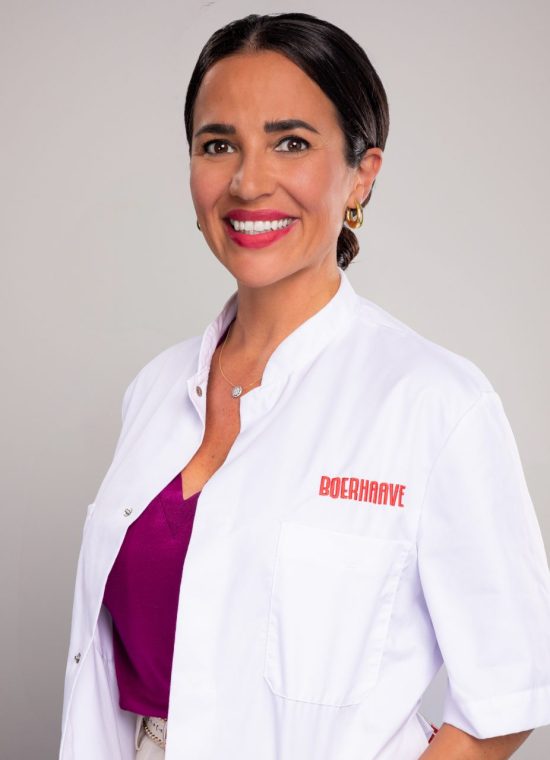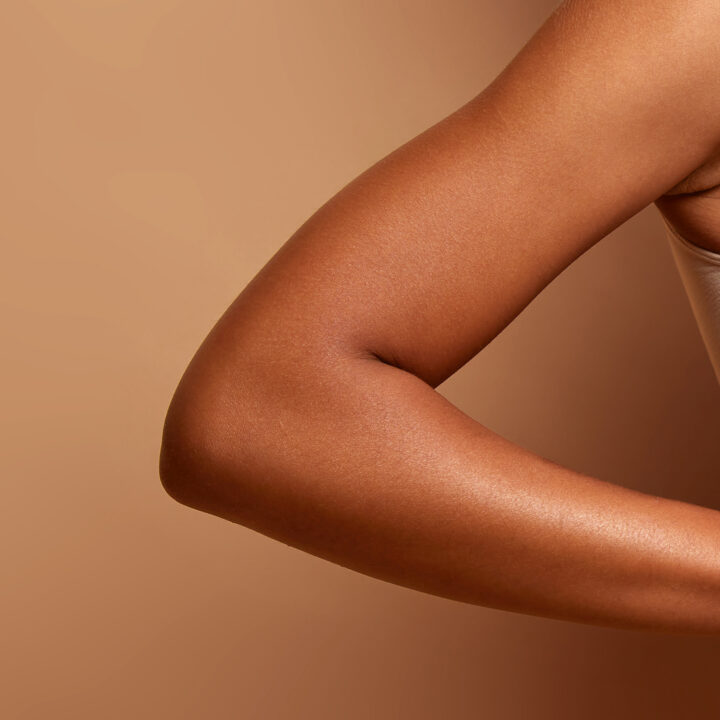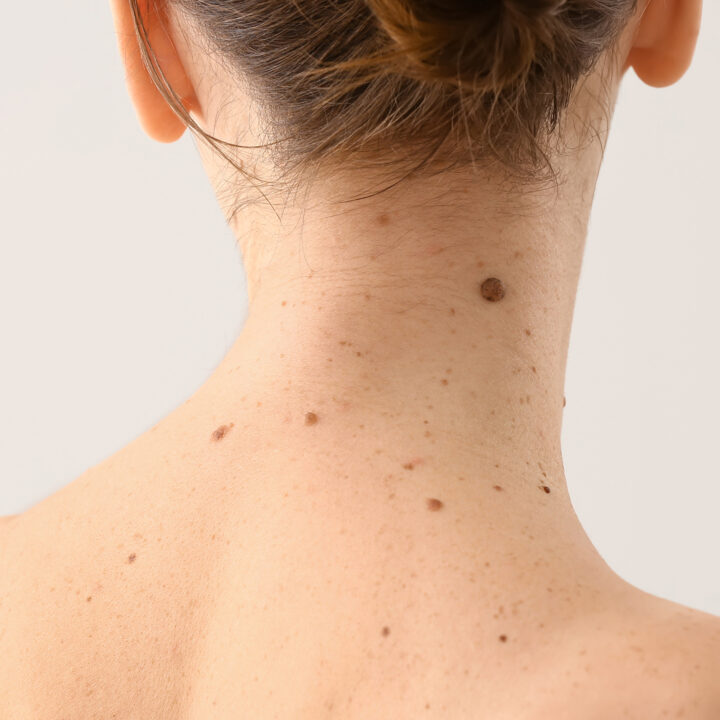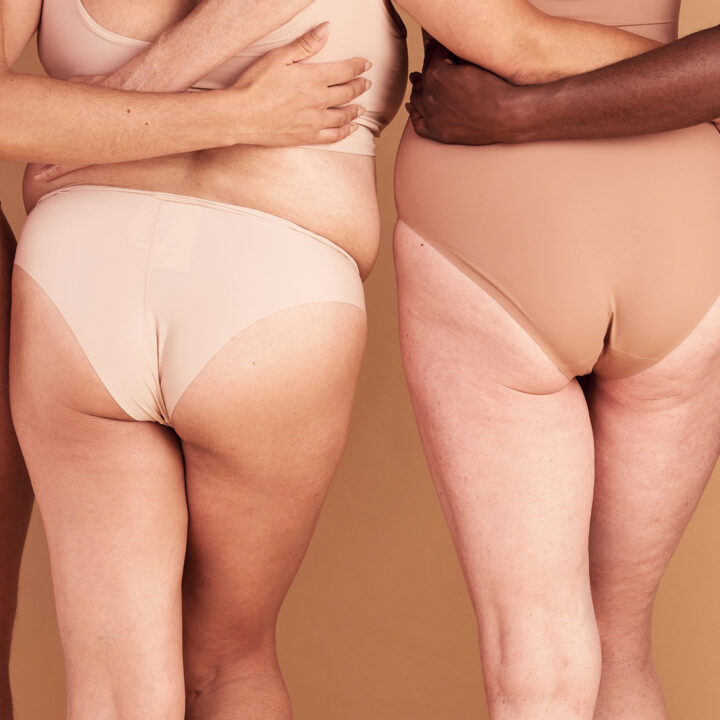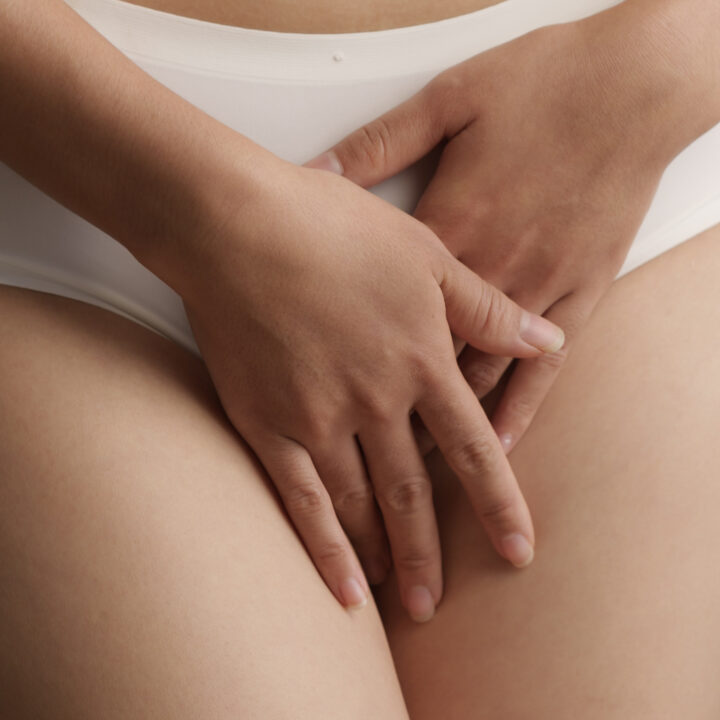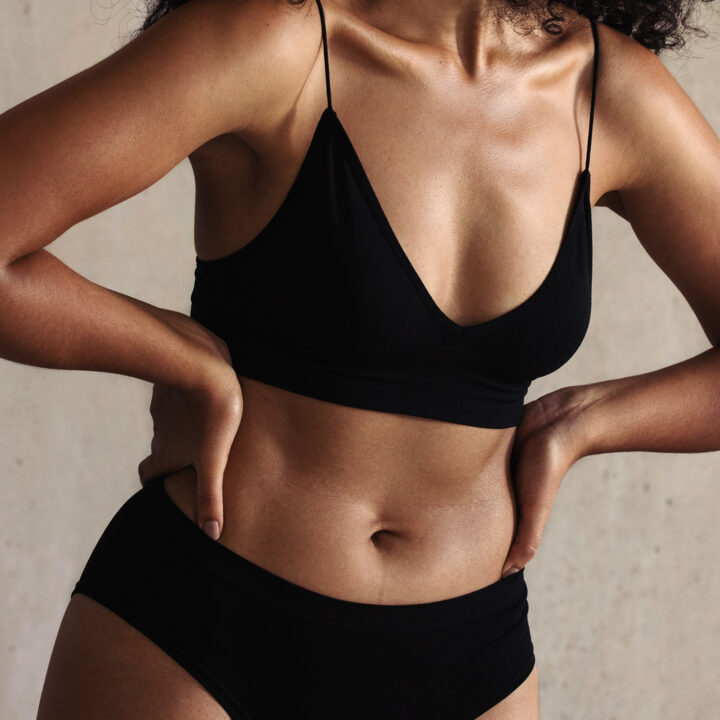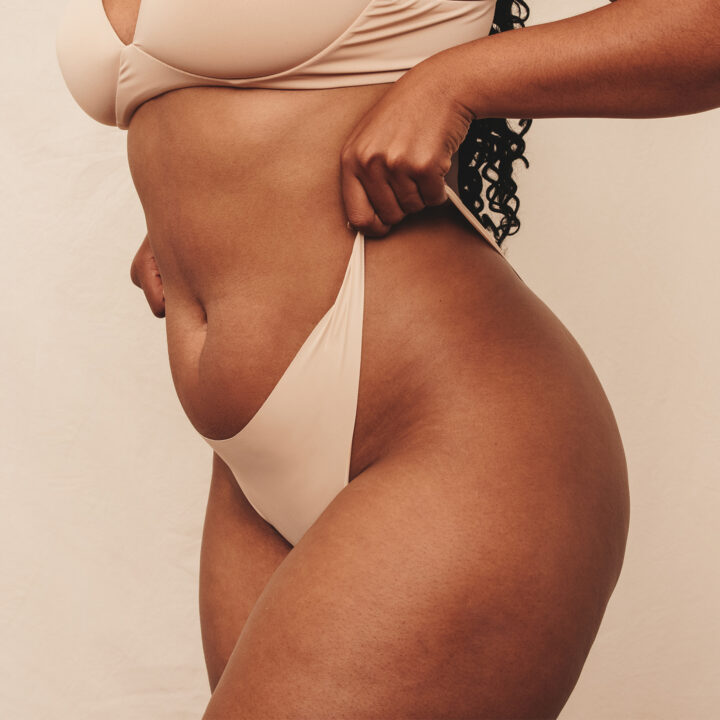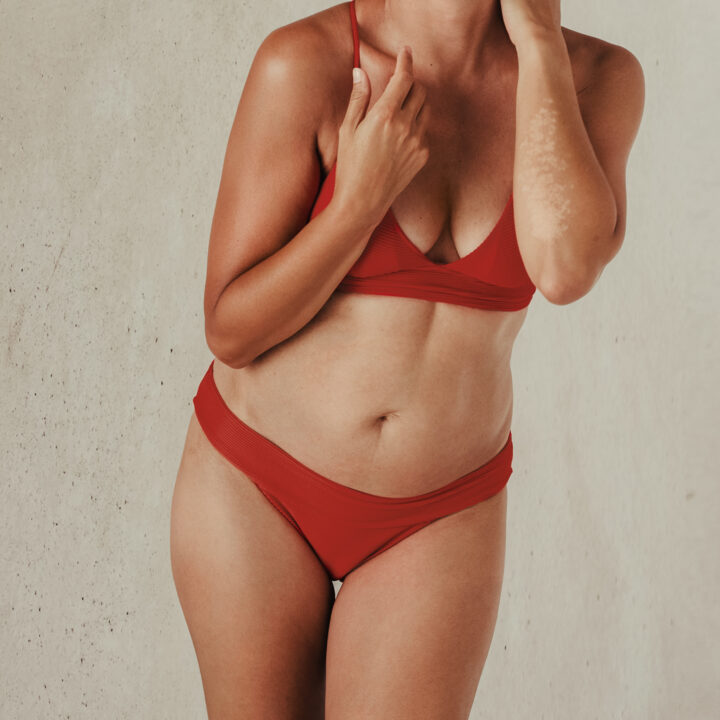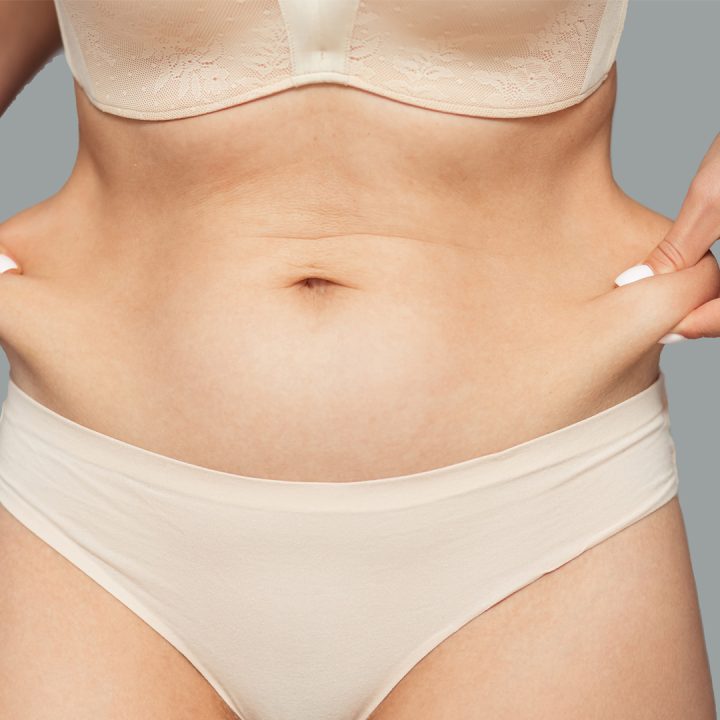Back lift
The skin on your back can slacken and droop as a result of ageing or weight loss. The rolls of excess skin are often visible, and can be particularly annoying when wearing a bra. A back lift procedure involves removing the excess skin at the level of the bra line.
Would you like to find out more about the available options? You can arrange a consultation with one of our plastic surgeons now or carry on reading below for more information about the procedure.
What does the back lift cost
01 More information
Types of treatment
Back lift
A standard back lift is suitable for people with a moderate to large amount of excess skin. After this procedure, your skin will be pulled tighter giving your back a sleeker and more appealing contour. You will no longer be bothered by the excess folds of skin that can be seen through your clothes.
The scar will run at an angle across your shoulder blades or horizontally beneath your bra strap.
Armpit-to-armpit back lift
If you have a large amount of excess skin, an armpit-to-armpit back lift – also known as a bra-line lift – may be a better option for you. This procedure clearly enhances the aesthetic appearance of the entire area along your bra line. After the procedure, you will feel more self-confident in what you wear, so you can walk out that door again in your favourite summer clothes!
The scar from this operation will run horizontally from armpit to armpit, but is not visible when wearing a bra or bikini.
Side lift
A side lift involves the removal of excess skin from the sides of your body. These excess folds often form after significant weight loss, as the skin has become too stretched out. The excess skin is usually associated with a tummy tuck, but can also be a problem in itself.
A side lift is a procedure performed under general anaesthetic, taking approximately 1 hour. The resultant scar runs from the front of the iliac crest to the lower back. This scar generally heals nicely, but it will not be invisible. It is often possible to decide on the position of the scar so that it can be concealed by clothing.
02 Consultation
Information on the procedure
Plastic surgeon
The consultation is always held with the plastic surgeon who will be carrying out your procedure.
During this consultation, you can discuss what bothers you the most about the saggy appearance of your back, armpits and/or sides and what you would like to have changed. The plastic surgeon will go through your medical history with you and examine your upper body. They will then suggest the most suitable surgical technique for you and discuss it with you directly.
At the end of your consultation, everything will be summarised in a treatment plan. This will be discussed with you, together with the corresponding costs, so that you will be in a position to make a well-informed decision.
The aim of the consultation is to inform you as clearly and fully as possible.
Consultant
Following on from your first consultation, you will have an appointment with your consultant. The aim of this appointment is to tell you about the general aspects to be arranged.
The operation
A back lift, armpit-to-armpit back lift or side lift operation is performed under general anaesthetic. This means that you will not be able to return home the same day and must stay overnight in the clinic. The next day, once approval from the medical staff has been given, you will be able to go home.
Before the anaesthesia, your plastic surgeon will again talk through the surgical procedure with you. They will also map out the planned surgery on your back, armpits and sides. The general anaesthetic is then administered. The operation is performed with you lying on your front.
The plastic surgeon starts by making an incision at an angle across your shoulder blades or horizontally along the bra line. However, the location and length of the incision will depend on the amount of skin to be removed. The longest incision runs from your left armpit to your right armpit.
The plastic surgeon applies a state-of-the-art surgical technique which may sometimes start with liposuction. The excess skin can then be optimally removed and the wound will then be closed with stitches.
All in all, the procedure lasts 2 to 3 hours.
03 After care and recovery
There are a number of things to be aware of after the operation. For instance, you will have to wear a compression garment day and night for the first 6 weeks after the procedure, except when you are showering. Throughout this period, you are to refrain from any strenuous physical exercise, lifting heavy weights or doing any heavy work. It is also important to avoid movements such as bending or stooping, as this places pressure on the scar. Having said that, you may sleep on your back, as this presses the skin against the underlying body structures, in turn reducing the amount of moisture building up under the scar.
Recovery
The body generally needs 1 to 2 weeks to recover from the surgery. During this recovery period, you may have some swelling and bruising around the treated area. The swelling will be worse in the first few days, but will start to subside after a week. You may also experience a significant build-up of fluid at the lowest point, i.e. your sides. This is a natural reaction of your body and is not generally worrying. It may persist for a couple of weeks, but will disappear over the course of time.
Scar care cream
At your first check-up with us, you will be given a scar care cream to take home with you. Once the wound has closed and the scabs have disappeared, you can start applying this cream. If you apply this cream to the closed wound twice a day, you increase the chance of the wound healing nicely.
04 Results
You will already be able to see and feel excellent results shortly after your surgery. However, the final results can best be assessed after 3 months, once all the swelling has subsided. Your back, armpits and/or sides will look sleeker and tauter.
It should be noted that your skin loses elasticity as you age. But the results will still be obvious. The best results will be achieved if you are a healthy and stable weight, and you manage to maintain this weight.
Scars
The scar from the surgery is quite long and lies in a visible place on your back. However, it can only be seen if you are not wearing any top or bra. It is useful to know that a scar takes 1 to 1½ years to completely calm down. Your scars will initially be red and swollen, but this will start to fade after a couple of weeks. For the first few months after the operation, you must not expose the scar to sunlight or sunbed rays. You may of course cover the scars or apply sun screen with a high sun protection factor of at least SPF 50.
05 Risks and complications
It is important you are aware that every operation can entail risks and complications. Although back lifts are performed with increasing frequency, there is still a risk of complications, albeit very low. It is therefore important to carefully read through the instructions you are given. This will help you reduce certain risks.
Possible complications may be:
- Infection
- Wound dehiscence (opening of the wound along the incision line)
- Haematoma (blood clot under the skin which has to be removed)
- Adverse reaction to the sedation
- Delayed wound healing
- Scar widening
- Haemorrhaging
- Dog ears (in the armpits)
- Seroma
- Asymmetry
- Permanent scars
- Damage to underlying structures
- Allergic reaction to tape, adhesive material and sticking plasters
- Pain
- Unsatisfactory aesthetic result
- Change in sensitivity
Smoking
Patients who smoke or use tobacco or nicotine products at the time of their surgery have a greater risk of complications, such as skin loss and impaired wound healing. Smoking may have a negative effect on the anaesthesia, which may in turn lead to an increased risk of bleeding. It is important not to smoke for at least 4 weeks prior to the operation and to keep this up for the entire recovery process.
People who are exposed to passive smoking may also have an increased risk of such complications. People who are not exposed to tobacco or nicotine products have a significantly lower risk of such complications.
More information
Plan your appointment now in our agenda or let us call you back.

